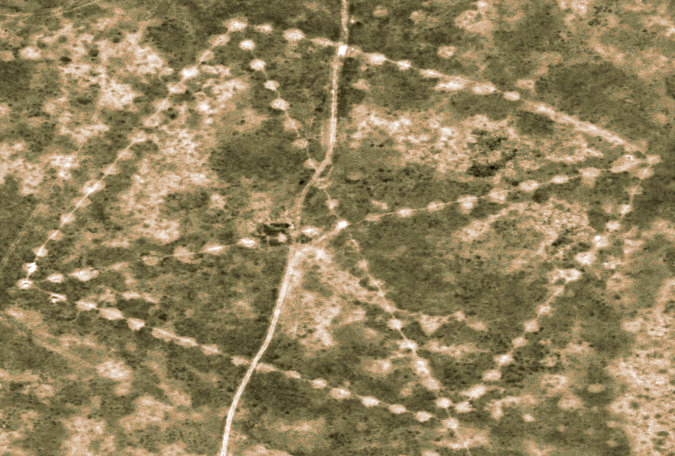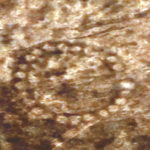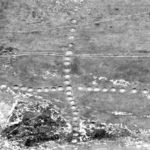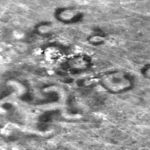NASA Satellite imagery of a barren and treeless steppe in northern Kazakhstan has revealed enormous earthworks that can only be seen from the air. Some of the formations date back 8000 years and are thought to have been built by the neolithic groups of the area.
Known as the Steppe Geoglyphs, these formations are as large as several football fields. The largest structure consists of 101 raised mounds, each 3 feet high and 30 feet across, creating a square with an X or cross intersecting it. There are at least 260 mounds, trenches, and ramparts in 5 different shapes found across the steppe.
The mounds were first discovered on Google Earth by a Kazakh economist and archaeology enthusiast Dimitry Dey in 2007. Since then, the Steppe Glyphs had gained little public attention until they were shown last year at an archaeology conference in Istanbul in which they were described as “unique” and “unstudied.”
The geoglyphs remained unstudied and virtually unknown until two weeks ago when NASA released high-definition satellite images, sparking public and archaeological interest. Archaeologists are trying to figure out what the importance of such massive arrays were to the neolithic people who created them, and why they can only be seen from above. Such a feat defies our current understanding of the capabilities of neolithic peoples to organize, build, and communicate.
“The idea that foragers could amass the numbers of people necessary to undertake large-scale projects — like creating the Kazakhstan geoglyphs — has caused archaeologists to deeply rethink the nature and timing of sophisticated large-scale human organization as one that predates settled and civilized societies,” Persis B. Clarkson, an archaeologist at the University of Winnipeg told the New York Times.
Archaeologists are hopeful that the Steppe Glyphs will provide further insight into just how the stone-age tribes functioned, and what kind of knowledge they had acquired. Many theories have been posed about the reason behind the glyphs, including aliens, relations to Hitler (even though the Swastika was used much earlier than the 20th century), and constellation mapping. Theories of the glyphs’ purpose range from the ridiculous to the entirely possible.
In March of 2007, Mr. Dey, 44, was at home watching “Pyramids, Mummies, and Tombs” on The Discovery Channel. “There are pyramids all over the Earth,” he remembered thinking. “In Kazakhstan there should be pyramids too.” Mr. Dey then searched through the landscape of Kazakhstan on Google Earth, and instead came across what he thought were old Soviet installations until finding more than 15 different formations.
Kazakhstan has also called for urgent protection by UNESCO as an important cultural heritage site — so far without reply. Earlier this year a formation called The Koga Cross was destroyed by road builders, even after Mr. Dey notified officials.
Tony Simpson



